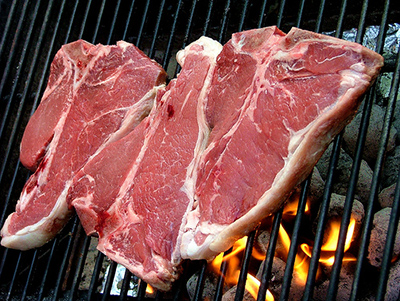Has anyone noticed the increased cost of supplements and manufactured feeds lately? What's the reason? Vitamin costs. In beef cattle nutrition, it seems a lot of attention is given and information is reported, regarding the importance of nutrients like protein, macro and trace minerals, fats and carbohydrates (starch and sugar).
Reducing oxidative stress for optimal performance
Recent studies cite that 83.9% of the cattle at harvest showed signs of chronic oxidative stress. What role do chelated trace minerals have in improving oxidative balance and how can we help cattle reach their full genetic potential?
Brigade: It doesn't cost enough and it's too easy
A customer very familiar with how well CRYSTALYX® Brigade® works on stressed calves at weaning time, once told me, “There are only two things wrong with Brigade®, it doesn’t cost enough, and it is too easy.” While that is humorous, there is a lot of truth in that statement. Brigade® will cost about 14 cents per head per day. In a typical 28 day receiving period, that is about $4 per head.
Decisions, decisions, decisions...
I’m going to do something that will shock you today. I’m going to advise you when NOT to use our CRYSTALYX® products. I know! I know! It’s pure heresy! But bear with me here.
Weaning and receiving calves the CRYSTALYX way
Using CRYSTALYX® in weaning & receiving programs is well established and promoted. In a CRYSTALYX® weaning program, products such as Beef-Lyx®, Brigade®, or Battalion® are placed with newly weaned calves or with cow-calf pairs a couple of weeks ahead of cow-calf separation. CRYSTALYX® is then left with calves for about a month until they are on feed and completely weaned. In this blog, I will review these different CRYSTALYX® products. There are distinct fortification differences between the three and one may fit better depending on the weaning strategy.
How beef cow-calf producers can reduce impact on the environment
Sustainable is an expressive term that has gained momentum when describing desired food production systems. It attempts to pull together all facets of what goes into food production and provide guidance to what is good for consumers, producers profitability, environment, livestock in the case of meat animal production, employees and communities. No small task when you consider these different parts of the food system. You can probably see without too much difficulty, that a priority in one area, could easily have a conflicting or negative effect in another area.
Beef as a functional food
One of the perks of my job is the opportunity to attend professional meetings and learn about the work of other scientists. One of the more interesting sessions at the recent joint meeting of the American Society of Animal Science and Canadian Society of Animal Science was about functional foods of animal origin.
All about that beef
May is Beef Month. It’s a time to celebrate all that the beef industry has to offer, regardless of breed or management. To celebrate the industry we all love, I offer you 10 things to share about cattle that your non-ag friends may not know.
No flies allowed: Various CRYSTALYX fly control formulas
It’s the time of year we see more attention to the topic of good fly control whether it be from advertising, producer meeting and seminar topics, blogs such as this, and others. CRYSTALYX® has a variety of supplement formulas that deliver three different feed through fly control additives, Rabon® Oral Larvicide, Altosid® (IGR), and Clarifly®. They all work well but have some different applications depending on fly control strategies. Still, no matter the fly control compound being delivered, CRYSTALYX® is a convenient and effective way to combine fly control with a self-fed supplement all in one package.
Grazing management technology moves into the robotic dairy barn
CRYSTALYX® supplements are highly palatable which contributes to several benefits related to grazing management. Cattle like the stuff and will seek it out! Strategic placement of barrels can modify where beef cattle graze and impact resting behavior in pasture and open range settings. A dairy free stall barn is a much smaller and confined setting but recent finds show that where barrels are placed does impact cow movement and behavior, even when abundant quantities of a TMR diet is offered in a restricted housing environment.










